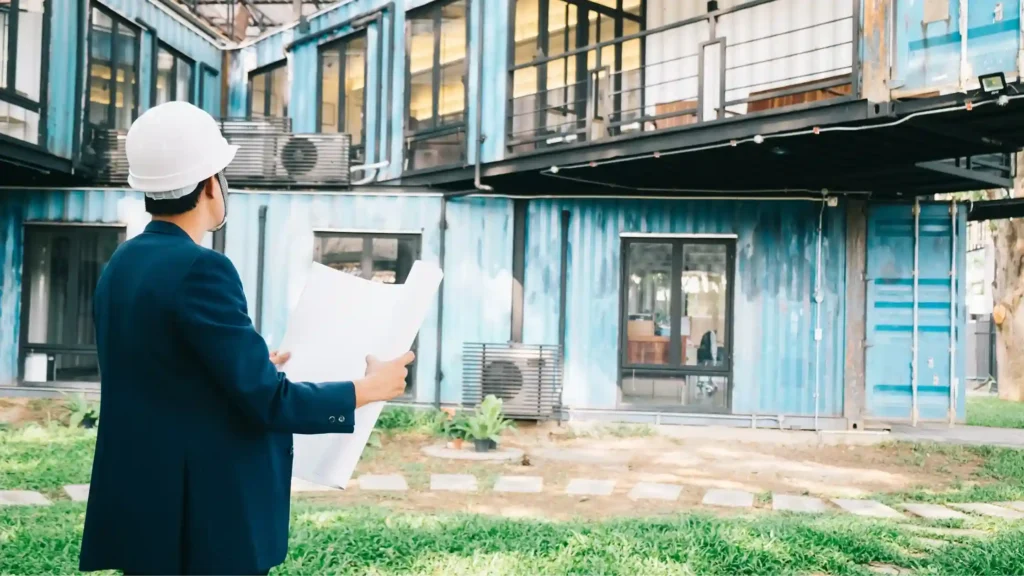
Types of Footing in Construction: An In-Depth Guide
Have you ever wondered what holds massive buildings and towering skyscrapers up? The answer lies within their foundation and footing. Understanding the types of footing in construction is critical because they transfer loads from the structure to the soil below. Choosing the right types of footing in construction is necessary to ensure safety, stability, and longevity.
In this guide, let’s discuss the different kinds of footing and why footing is important in construction. Meanwhile, learn how Infra Ratepersqft can help streamline your building project with expert in projects.
Discover the types of footings in construction to ensure stability and longevity for your building projects.
What is Footing in Construction?
Among the many types of footing in construction, footings are base structures that support columns or walls and distribute the weight of the building to the ground.
Footing vs Foundation
Whereas a foundation refers to the entire supporting system of a building, a footing is usually one part of the former and is located at the bottom.
How Many Kinds of Footing Exist?
The various types of footing in construction are designed to meet specific load requirements, soil conditions, and structural needs.
1. Spread Footing
Spread footing is probably the most basic and popular form. It spreads the weight evenly in a wide area for stable ground.
Key Characteristics:
- Usually rectangular or circular.
- Perfect for structures with moderate loads.
Usual Applications:
- Residential buildings and small commercial structures.
2. Isolated Footing
Also called isolated trapezoidal footing, it supports individual columns.
Main Characteristics:
- Economical and easy to construct.
- Usable for uniform soil conditions.
Applications
- Single storey buildings and structures that are widely columned.
3. Combined Footing
A combined footing is used when two or more columns are close to each other so that individual footings overlap.
Key Features:
- Economical for heavy loads.
- Used when space is limited.
Common Uses:
- Structures near property boundaries or in urban areas.
4. Strap Footing
In strap footing, two isolated footings are combined using a beam to distribute the loads.
Key Features:
- Prevents uneven settlement.
- Suitable for structures with non-uniform soil.
Use:
- Commercial buildings and industrial setups.
5. Mat or Raft Footing
This type covers the entire area under a building and spreads the load evenly.
Important Features:
- It is ideal for weak soils.
- Settlement problems are minimized.
Applications:
High-rise buildings, basements, and heavy industrial establishments.
6. Pile Footing
Pile footing transfers loads to deeper soil layers through piles.
Key Features:
- For poor or saturated soils.
- For high and heavy structures, as it offers stability.
Common Use:
- Bridges, towers, and offshore structures.
7. Sloped Footing
Sloped footings have a slope to reduce the amount of concrete used while maintaining stability.
Key Features:
- Saves cost.
- It is very common in rural areas and low-budget constructions.
Common Use:
- Small residential and agricultural buildings.
8. Eccentric Footing
An eccentric footing is intended for loads that are not centrally located.
Key Features:
- It balances uneven loads.
- It requires accurate calculations.
Common Applications:
- Structures on the boundary of a property or on an irregularly shaped land.
Types of Footing in Civil Engineering: A Detailed Perspective
In civil engineering, the footing design depends upon the load requirements and the analysis of soil. Advanced footing designs such as isolated trapezoidal footing, combined footing, and pile footings ensure durability and safety in challenging conditions.
Tips for selecting the best types of footing in construction for your project:
- Examine the type of soil.
- Calculate Load Needs.
- Consult experts like Infra Ratepersqft to get professional advice.
Why is Spread Footing Such a Success?
Spread footing is a favorite because it is simple, cost-effective, and versatile. It is very suitable for firm soil conditions and moderate loads.
Key Differences: Footing vs Foundation
A footing and a foundation are construction concepts that are vital but which differ in scope and functions. It is the lowest part of the structure, and it helps to support columns or walls, distributing loads evenly into the soil. It can be described as part of the broader foundation, in that it refers to elements that transmit the load from the structure down to the ground.
Whereas the footings are small in nature and support local elements, foundations include the whole base system with a focus on stability and safety in totality. So basically, footings form an essential part of the structure.
Below is the tabular representation of the key differences of footing vs foundation:
| Aspect | Footing | Foundation |
| Definition | Base component of a foundation. | Entire support system. |
| Purpose | Transfers load to the ground. | Provides overall stability. |
| Types | Spread, combined, pile, etc. | Shallow, deep, etc. |
| Depth | Generally shallow. | Varies based on design. |
Understand the key differences between footing and foundation and their roles in supporting structures.
Conclusion
The choice of types of footing in construction plays a crucial role in the stability and longevity of a structure. Whether you’re planning a small residential building or a massive industrial project, understanding footings like spread footing, combined footing, and pile footing is essential.
With the help of Infra Ratepersqft, you will have expert advice and reliable construction solutions throughout. This service specializes in types of footing in civil engineering, ensuring that your project is built on a solid foundation.

Frequently Asked Questions
Q1: How many types are there in construction?
Eight major types are there like a spread footing, combined footing, pile footing, etc
Q2: What is Isolated trapezoidal footing?
Isolated trapezoidal footing is an isolated footing but trapezoidal in its form to reduce material usage by sloping.
Q3: What is the difference between footing and foundation?
A footing is a particular member which transmits loads to the soil, while a foundation is a system
of members supporting the structure.
Q4: When to use combined footing?
Use combined footing when columns are near one another, and individual footings will overlap.
Q5: How can Infra Ratepersqft help in footing construction?
Infra Ratepersqft offers advice from experts on designing and choosing the right types of footing, so cost-effective and durable solutions are assured.



